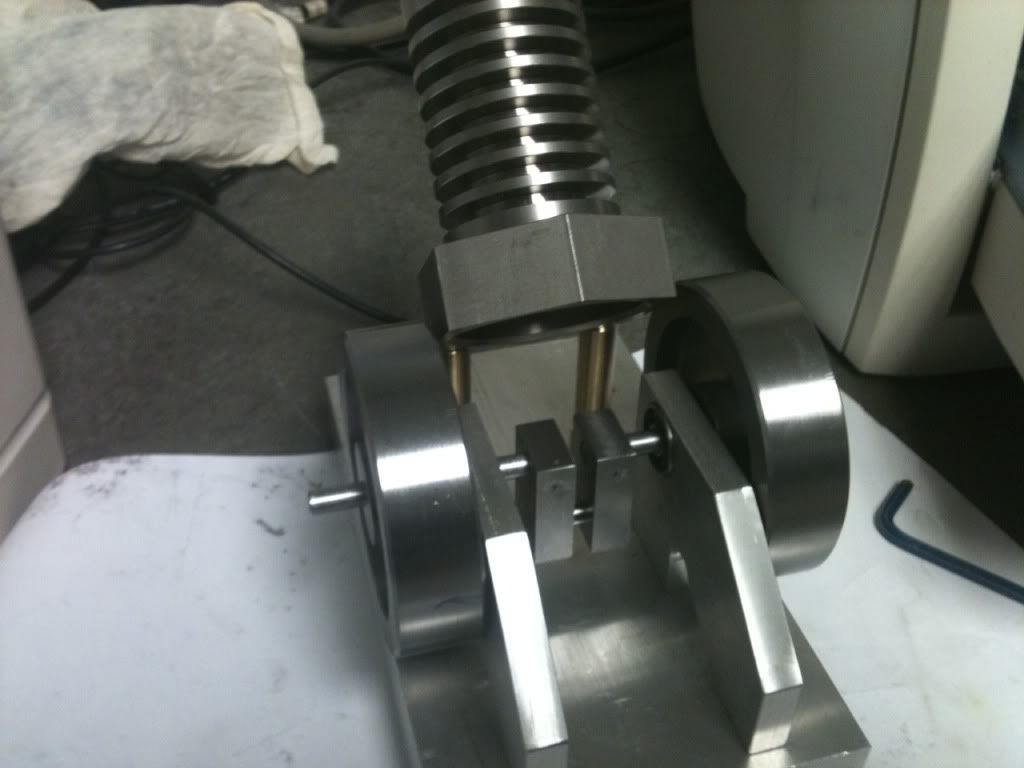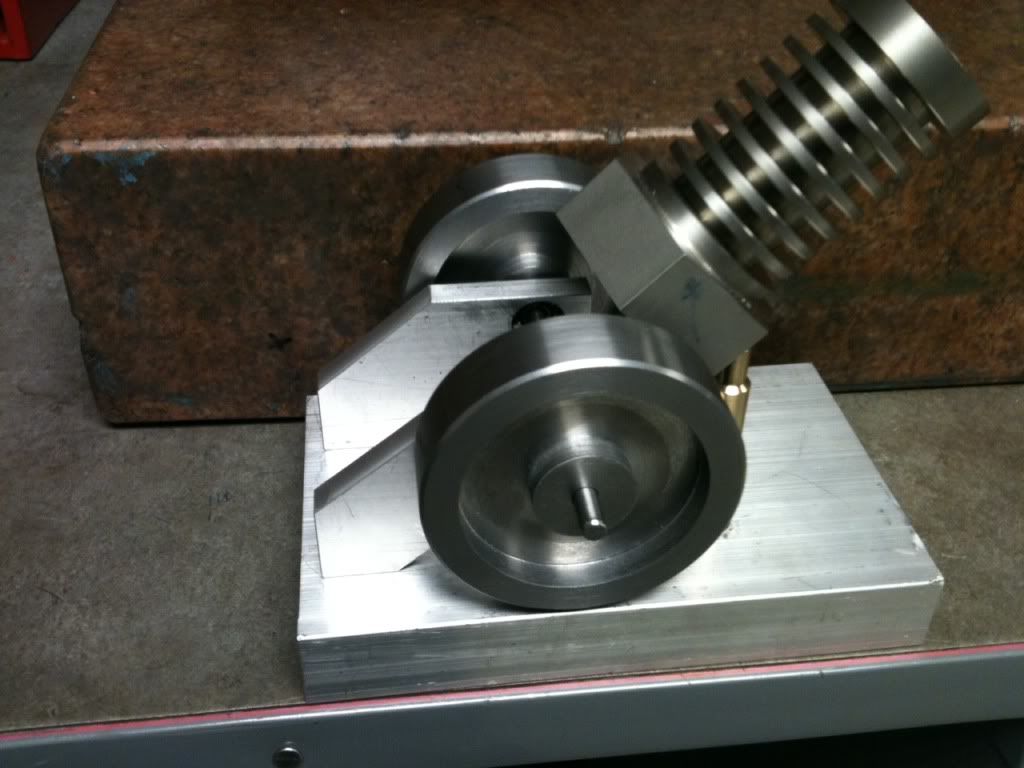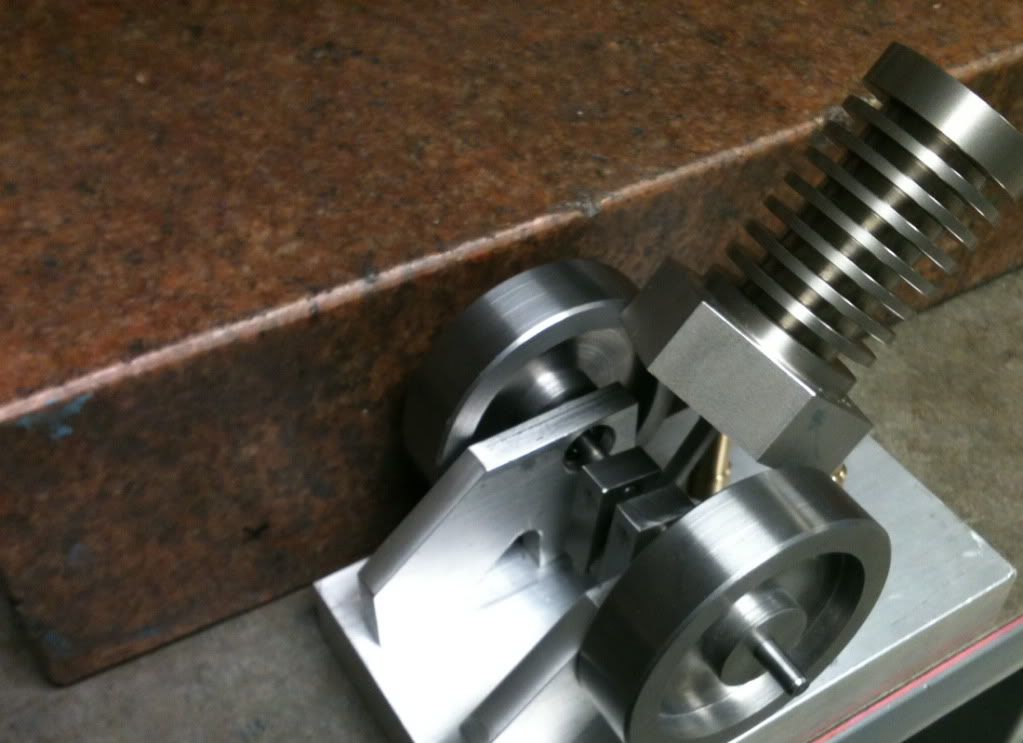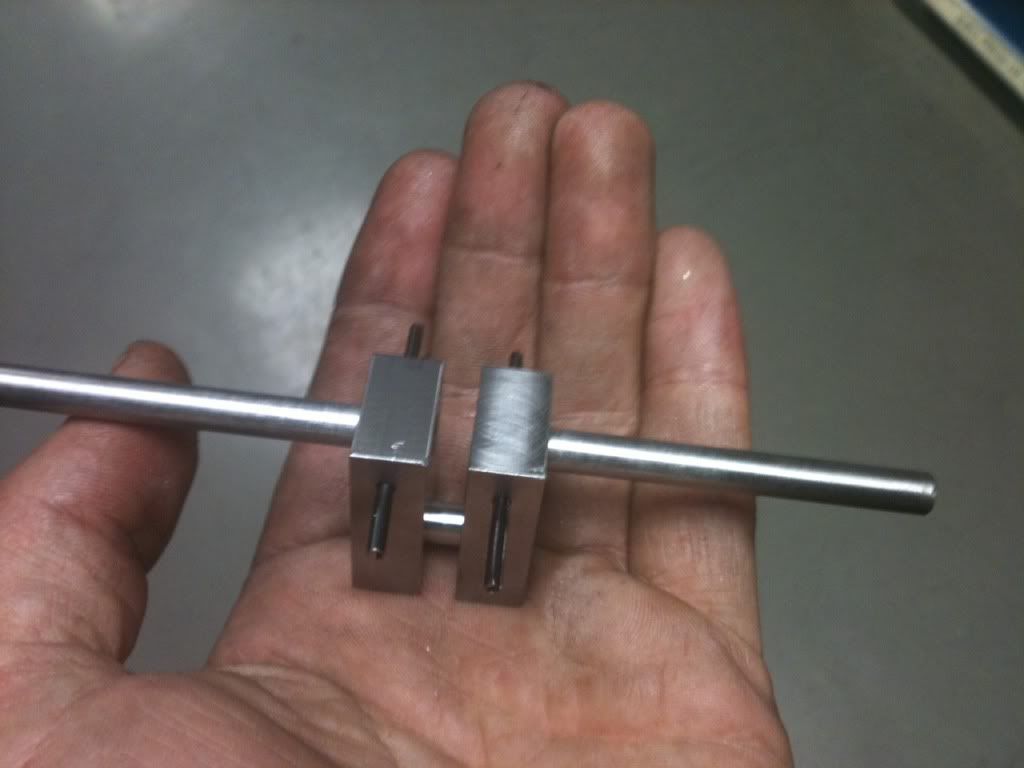Hi everybody
I started on a flame eater I am building ,This project started when i found a nice piece of stainless hex
which I wanted to mount at 45 degrees to look some way like a cannon......I am using a CI piston 26mm with a 40 mm total stroke ,The crankshaft is built up,
 I will silver solder this later just pressed together for the moment, and my flywheels need spokes or holes to lighten,
I will silver solder this later just pressed together for the moment, and my flywheels need spokes or holes to lighten,
I have not figured out where or what type of valve to use yet, I am slowly running out of space but I will figure it out. Any ideas would be great.
Regards Jamie




I started on a flame eater I am building ,This project started when i found a nice piece of stainless hex
which I wanted to mount at 45 degrees to look some way like a cannon......I am using a CI piston 26mm with a 40 mm total stroke ,The crankshaft is built up,
I have not figured out where or what type of valve to use yet, I am slowly running out of space but I will figure it out. Any ideas would be great.
Regards Jamie








